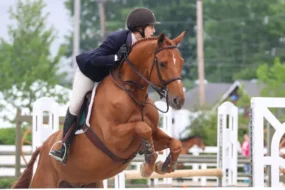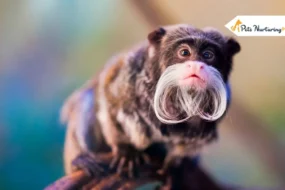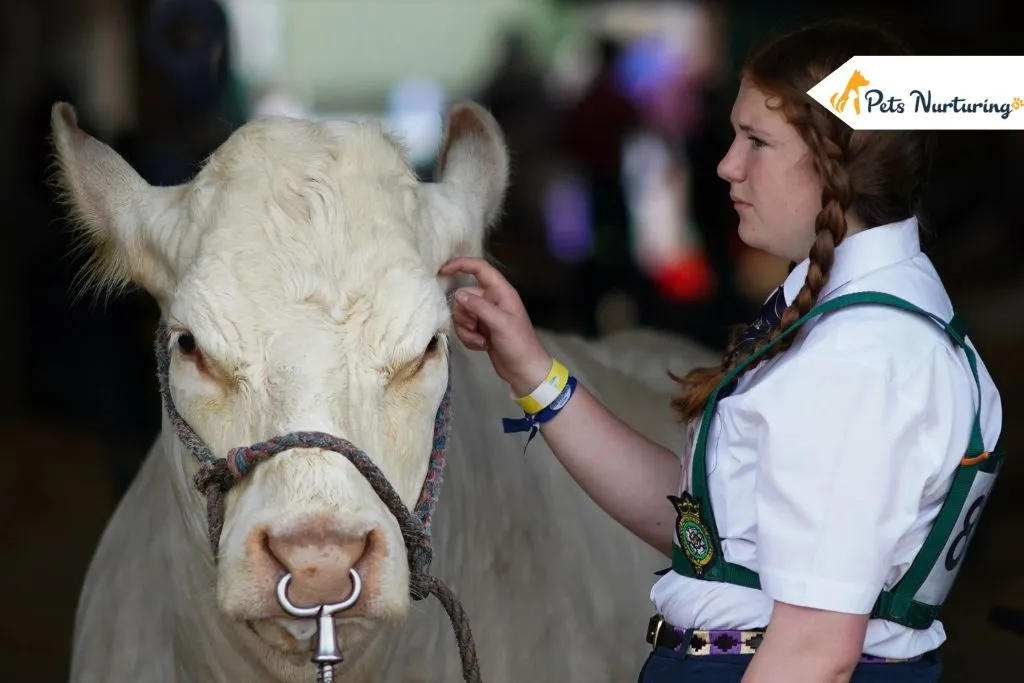
I’ve tried just about every kind of nose ring there is for my cows. While the basic purpose remains the same – to control and lead the animals – there are quite a few options when it comes to materials, shapes, and styles. Through trial and error on my own farm, I’ve found that some work better than others for my gentle bovines. Here’s my first-hand experience with the various cow nose rings types available.
1. Classic Copper Cow Nose Ring
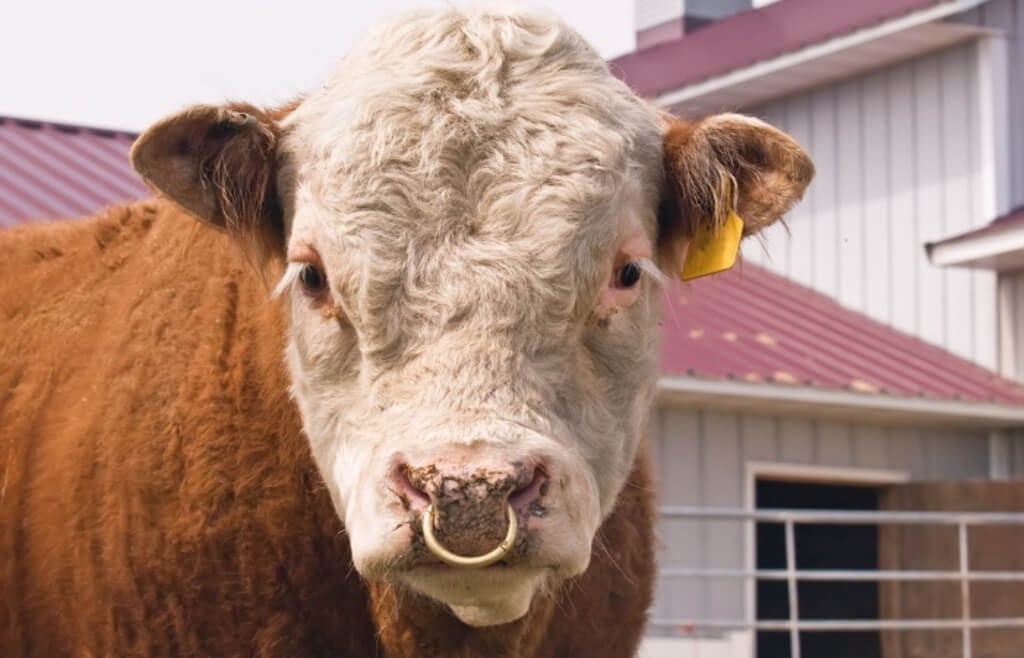
The most traditional option is the basic copper nose ring. Copper has been used for cattle rings for centuries because it’s readily available, affordable, and has antimicrobial properties. This helps avoid infections in the tender nasal area. These classic rings have a simple circular shape with a small gap on one side to allow them to be squeezed open for putting on and taking off.
I’ve found copper rings to be fairly effective on my farm. The material is malleable so I can adjust the size as needed for each cow. It also develops a greenish patina over time that seems to protect it from corrosion. However, copper can bend out of shape with rough handling. I’ve had a few get warped or distorted by rowdy cows rubbing their noses on fence posts. So they do require occasional replacement.
2. Stainless Steel Cow Nose Rings
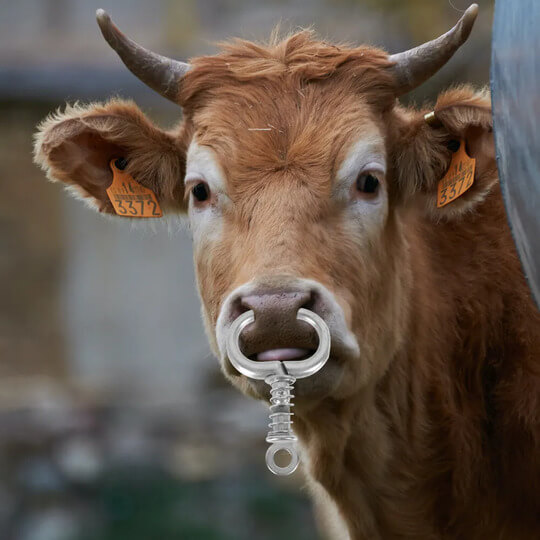
For cows that need extra durability, stainless steel nose rings are a great choice. Surgical stainless steel provides excellent strength while also being hypoallergenic. This means less irritation for my sensitive cows’ noses compared to other metals.
The stainless versions look quite similar to copper rings with a round shape and small opening. But they hold their form much better even if the cows get feisty and try to shake them off. I have some older gals with tough leathery snouts that refused to keep other rings on before. The stainless steel finally did the trick!
They’re easy to clean and sanitize too. I just give them a quick boil or soak them in an antiseptic solution between uses. This helps prevent the spread of any pathogens between my animals.
3. Plastic Nose Rings for Cows
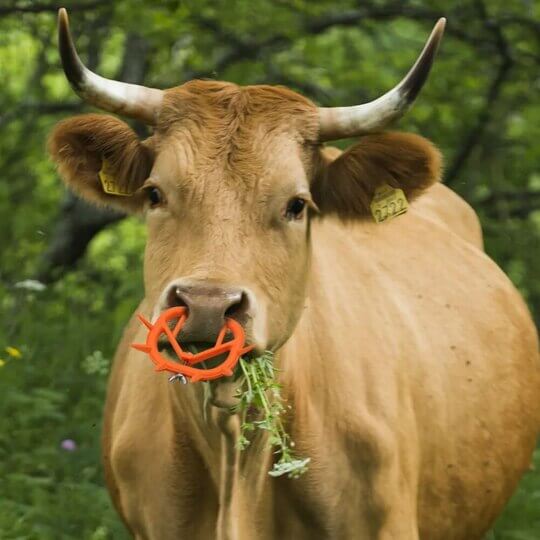
In my opinion, the plastic cow nose rings are more about fun and style than practicality. But they do work reasonably well and I find my grandkids love picking out colorful ones for our sweet dairy cows.
These rings are made from lightweight, flexible plastic in every color you can imagine – neon pink, purple, blue, green, and more. They’re easy to squeeze open to get on and have a smooth surface that doesn’t irritate the nostrils quite as much. However, the plastic can crack over time and the colors fade in the sun.
I save these for young 4H calves that will outgrow them quickly. The kiddos sure get a kick out of having a pink-nosed cow to lead around at the fair!
4. Rubber Nose Rings For Cows
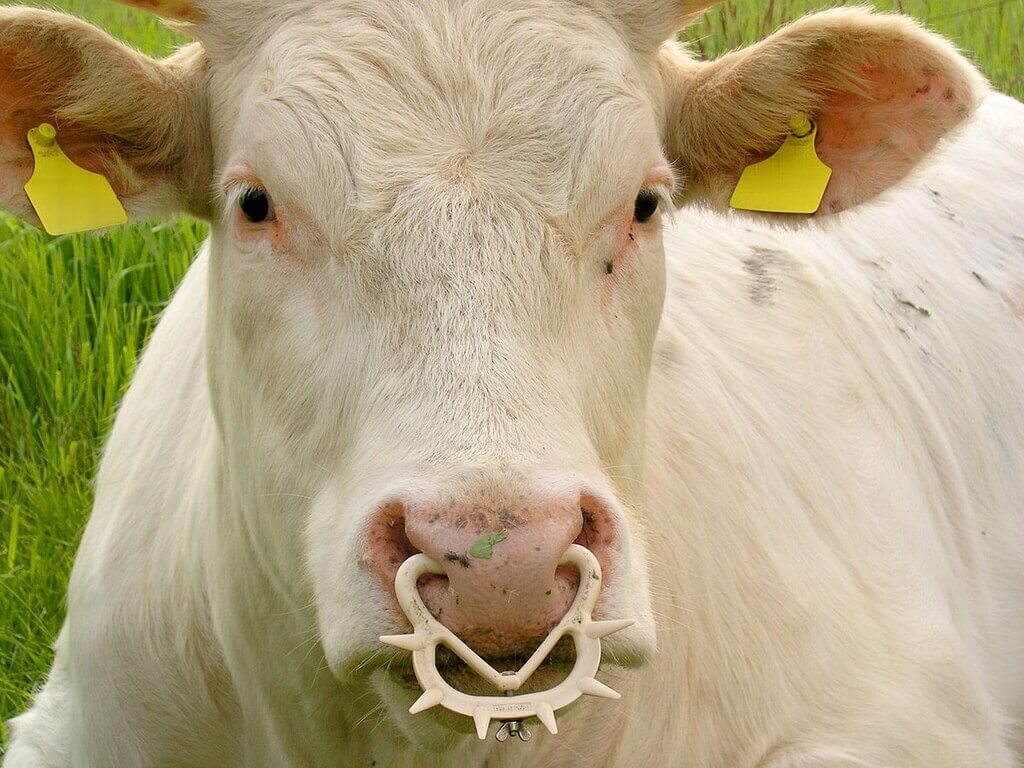
For the most gentle option, I like to use flexible rubber nose rings on my breeding stock and any cows recovering from illness or injury. The soft rubber causes less abrasion and scarring if the animals rub their noses frequently.
These look kind of like thick O-rings with a solid, non-hinged circular shape. I can simply stretch them wide open to place them in the nostril where they conform snugly to the contour of the snout.
The main downside is that rubber can degrade over time in the elements. I have to keep an eye out for cracking or stretching and replace them more frequently than other styles. But for an extra level of cushioning and safety for my herd’s schnozzes, it’s worth it.
5. Studded Cow Nose Rings
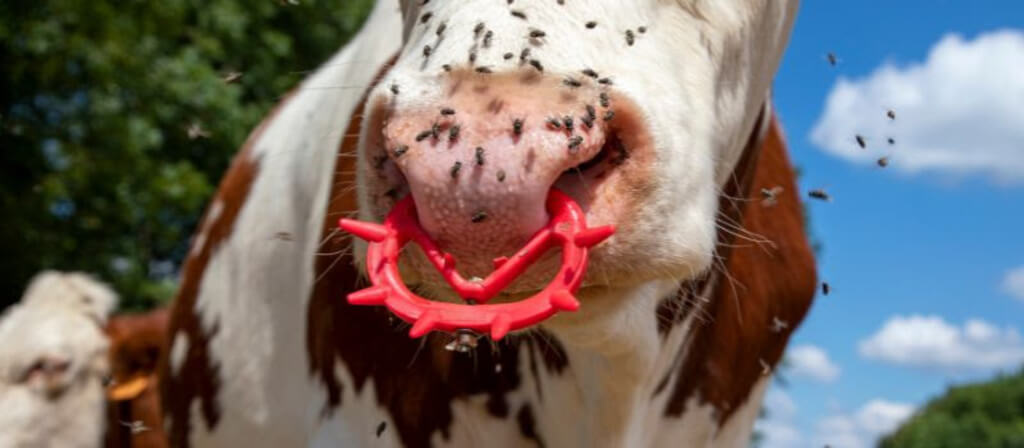
Now these studded nose rings are certainly an eye-catching choice! As the name suggests, they have little metal studs or faux gems embedded around the ring itself. These are primarily decorative and don’t serve much practical purpose on my farm.
The studs come in various shapes from spikes to domes. I’ll admit it’s pretty cute to see my cows trotting around with their punk rock-style snouts. But the embellishments can also snag on fences or fall out over time. And the extra ridges seem to harbor more dirt and gunk if I don’t diligently clean them.
So while fun for shows, I don’t use the flashy studded rings for everyday farm work. I save them for my most tolerant and patient bovines that enjoy getting dolled up.
6. Septum Nose Rings For Cows
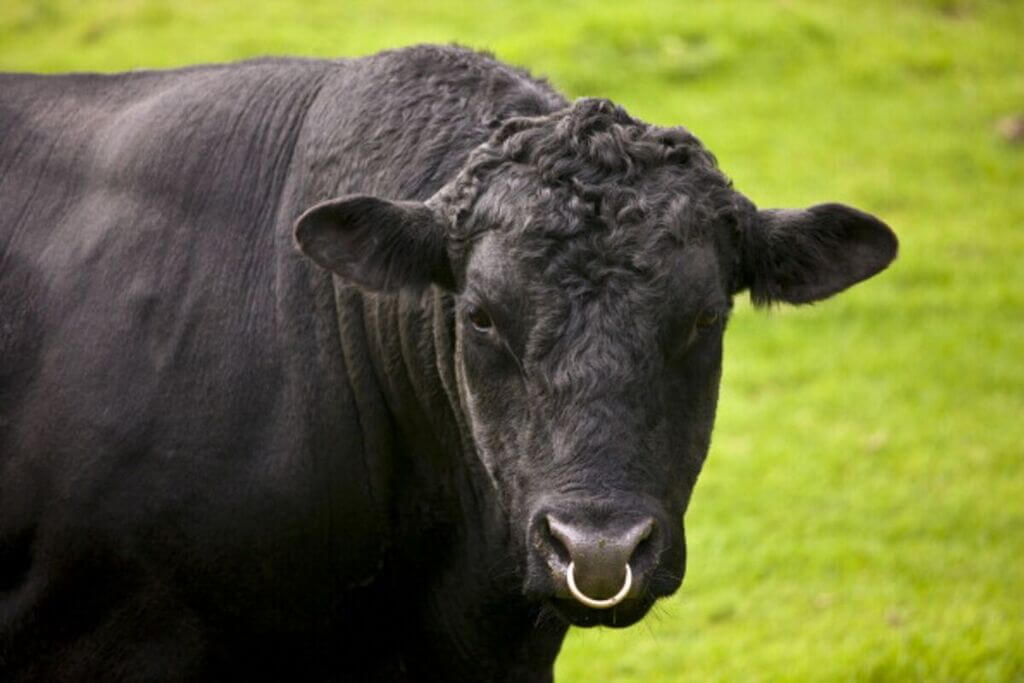
In the traditional method, nose rings for cattle go through the nostril itself. But some modern styles pierce the nasal septum instead. This septum nose ring has a U-shape that goes up through the fleshy “sweet spot” in the cow’s snout.
Piercing the septum requires more precision and care to place the ring correctly. But it has some advantages. There’s less risk of tearing or enlarging the nostrils over time. The ridge of the septum also helps hold the ring firmly in place.
From my experience, the cows don’t seem to mind the septum rings once the piercing heals. But it does take longer for that tender tissue to toughen up compared to the nostrils. I use an antiseptic ointment to help avoid infection during the process.
Nose Ring Size and Placement Matters
No matter the style you choose, proper sizing and placement of the cow nose ring is crucial. I always pick a diameter that’s small enough to avoid slipping out, but large enough to not constrict swelling. Typically 5-7 cm is ideal for adult cattle. I place them about 2/3 up from the nostril opening, where there’s a good amount of flesh.
It’s also important to get the right gauge or thickness. Thicker rings have greater tensile strength but can cause more tissue trauma. I aim for 1/4 inch diameter for most mature cows which provides a good balance. And I make sure to open and close the ring gently with pliers, never forcing it on.
Additional Fact
Interestingly, the use of nose rings is not limited to cattle. Certain marine mammals like whales and dolphins occasionally have piercings too. Wild beluga whales have been observed with circular holes through their melons – the fatty protrusions on their heads. It’s believed these punctures may be caused by parasites or even the sharp teeth of dominant males during aggressive mating encounters.
Similarly, some female bottlenose dolphins develop nose ring-like calcifications around nostril slits as they age. While not fully understood, these nose punctures in aquatic mammals demonstrate that body piercings occur throughout the animal kingdom – not just in our farm cow friends!
Final Words
When it comes to picking the perfect Cow nose ring, there are many factors to consider based on each animal’s age, breed, temperament, and role on the farm. Through years of hands-on experience, I’ve found what works best for my herd’s comfort and my own ability to humanely manage them.
While tradition and practicality tend to guide my choices, I’m always open to trying innovative new styles too. When it comes to our bovine family members, their health and happiness come first! I hope this overview of the various nose ring options out there is helpful for fellow cattle folks making this important decision. Please feel free to moo at me with any other cow nose ring questions!
Explore Further:










